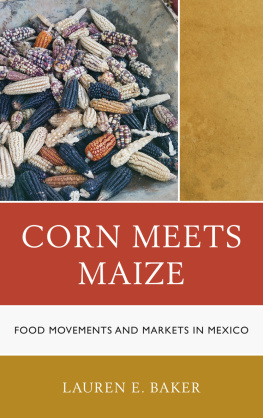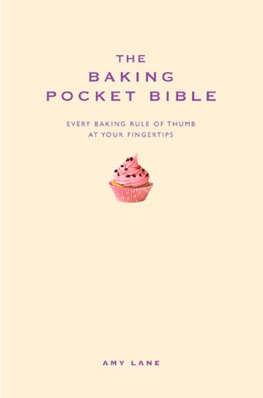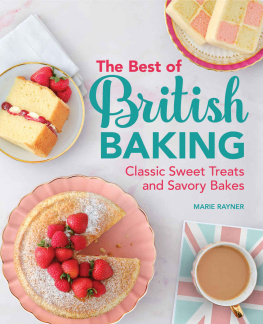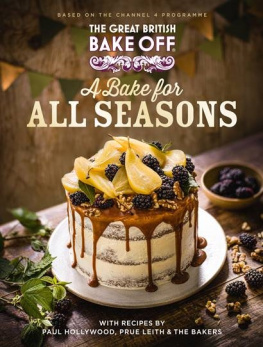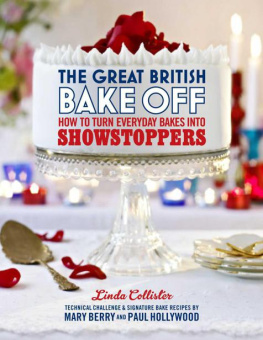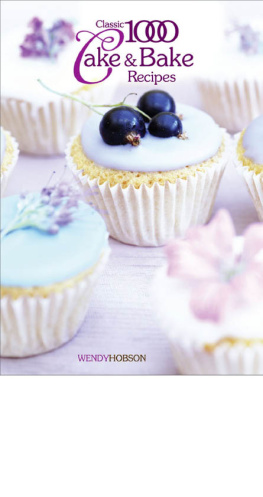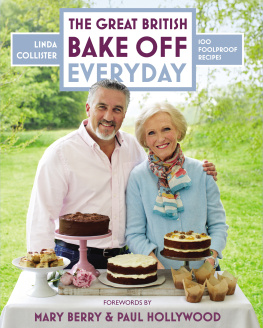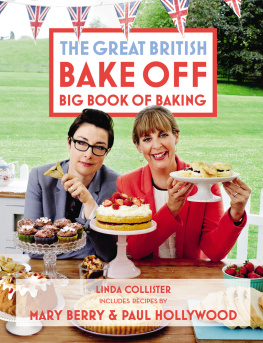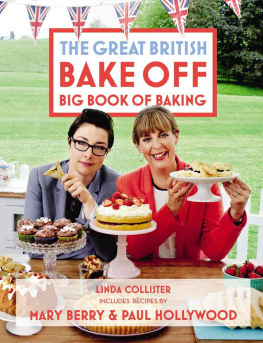CONTENTS
About the Book
Banish sunken sponges, burned caramel and soggy bottoms from your kitchen forever!
This book answers over 150 essential baking questions, looking at the common techniques we use and the history of how they came about.
- Why do cakes sometimes sink in the middle?
- How can I tell if my bread is perfectly risen?
- Why havent I been able to whisk my egg whites properly?
There are also 30 classic recipes demonstrating the key skills that every baker should know all to help you perfect your baking at home.
List of Recipes
INTRODUCTION
Whether you are already an avid baker wanting to improve your skills or just thinking about making a cake for the first time and interested to find out more, this book is for you.
How to Avoid a Soggy Bottom is not your usual cookery book, however. Its a helpful guide and a friendly companion to your well-stocked cookbook collection. By gently guiding you through the rules of baking, it will show you how to improve your techniques and hopefully give you the confidence to experiment with your own recipes or adapt recipes from your favourite books. Ultimately, its going to make your baking better.
Every good baker should have a thorough knowledge of the art, science and history of their craft because learning about the origins of the processes and the principles behind them will really help you to understand why you do things a certain way or why things might not have worked. With this in mind, this book investigates the chemistry as well as the history behind the age-old methods we use why baking powder was invented and how it works; how brewing came to play such an important role in breadmaking; why you cream a sponge cake, but use the rubbing-in method to make scones; and how gluten affects the texture of your pastry.
To help you along the way, there are tried-and-tested recipes that use the key skills explained in each chapter. Have a go at making yeasted and creamed sponge cakes, kneaded and unkneaded loaves, and rich pastries made with butter, olive oil and lard to see what they do to the bakes flavour and texture. These recipes will give you a good foundation to build on so that you can take your baking to new heights.
With this book in one hand and your wooden spoon in the other, you neednt fear the risk of over-whisked egg whites, damp biscuits, grainy caramel or, indeed, a soggy bottom ever again.
Gerard Baker

Cake-making is actually incredibly straightforward. By combining basic ingredients flour, eggs, sugar and fat you can create an astounding number of very different cakes. So why do we see such varying results, some intentional and some less so?
One explanation is the way in which the ingredients are combined. The techniques you use when you cream, rub in or whisk your cake mixture will all influence the outcome of your bake. How heat reacts with the different ingredients will also affect whether your cake is baked through, has risen correctly and has the light and airy or dense, sticky texture you were hoping for. Understanding these techniques and the principles behind them will therefore help you to ensure you get the result you want every time.
The differences between biscuits, cakes and breads were not clearly defined for many centuries, as we made biscuit-like breads and bread-like cakes, but slowly our knowledge of cake- and biscuit-making has evolved until they have become distinct crafts. From the search for a practical raising agent to replace yeast, to the introduction of eggs to create an airy sponge and the use of cookie dough to test an ovens temperature, baking has always adapted as we continue to invent ever-more ingenious techniques and ideas.
CAKES
A SLICE OF HISTORY
Where does cake come from?
While the Greeks and Romans of southern Europe can be credited as the inventors of early cakes, the word cake actually comes from northern Europe, and from the Old Norse word kaka , first seen in texts in the thirteenth century. (Both the English word cake and the German equivalent, kuchen , derive from this Old Norse word.) However, kaka was nothing like what we understand by the word cake today in fact, it described a rough, round, dry, biscuit-like bread (oatcakes being one of the best surviving examples).
What were early cakes like?
While the early inhabitants of northern Europe made biscuit-breads, it was the clever Romans and Greeks who learned to bake more doughy, sweet bakes using yeast mixed with coarse flour and sweetened with dried fruits or honey. These early cakes must have been dense and heavy with a strong yeasty tang much more like todays breads than cake.
From kaka to kuchen to the Victoria sandwich: how did we arrive at our modern-day cake?
It wasnt until the fifteenth century that the texture of cakes became anything like the light, spongy varieties we enjoy today. Little, airy delicacies, such as sponge fingers and biscuits began to appear, but rather than using yeast to make them rise, these lighter cakes were made with eggs, beaten by hand for up to an hour and sweetened with the exotic delicacy of sugar. However, as eggs were not readily available, these tasty morsels were considered a luxury and enjoyed only by the privileged few. Eggs would not become common in cake baking until the eighteenth century and then gradually became the raising agent of choice until the invention of baking powder (for more on raising agents and eggs, see ).
As baking techniques developed, the muddled evolution of breads, pastries, cakes and biscuits continued and the differences between the four types was often hard to define. This conundrum is perhaps most evident in some of our favourite regional cakes. Welsh Bara Brith (see cake; Eccles cakes and Banbury cakes are more like pastry than cakes; while the flat, round Goosnargh cakes (similar to shortbread) might now be described more accurately as biscuits.
Finally, it was the cake-loving Victorians whom we must thank for giving Britain one of its most cherished and most baked cakes, the Victoria sandwich. The classic recipe for the jam-filled sponge was laid out by Mrs Beeton in her Book of Household Management in 1861 and has been proudly served at afternoon teas, school ftes and bake sales ever since.
BARA BRITH
Bara Brith (meaning speckled bread) is a fruity teatime snack and perhaps one of the best examples of a sweet bread-like cake raised using yeast. Debates still abound in Wales as to whether it should be classed as a bread or a cake, and some modern recipes now omit the yeast and use self-raising flour, but the recipe below, which does contain yeast, remains true to tradition.






